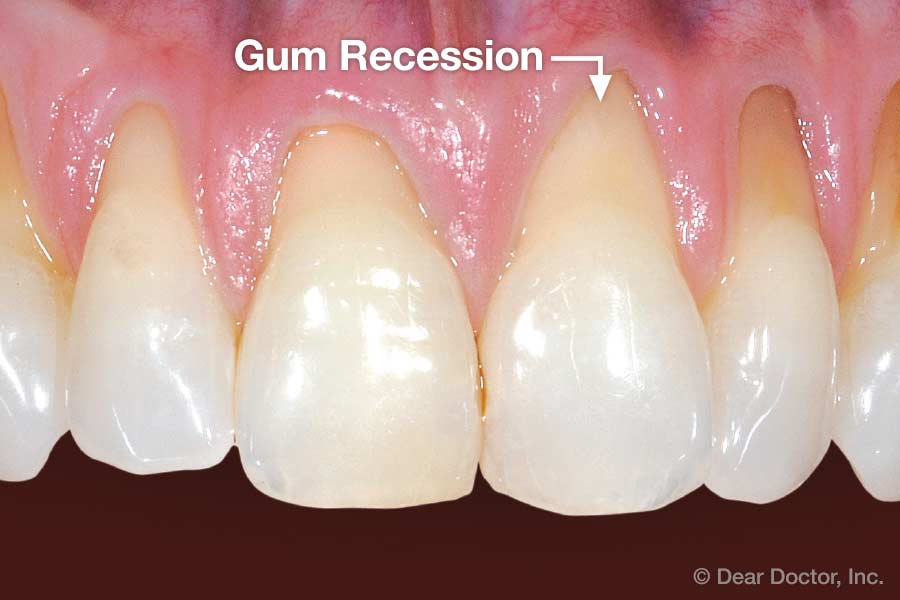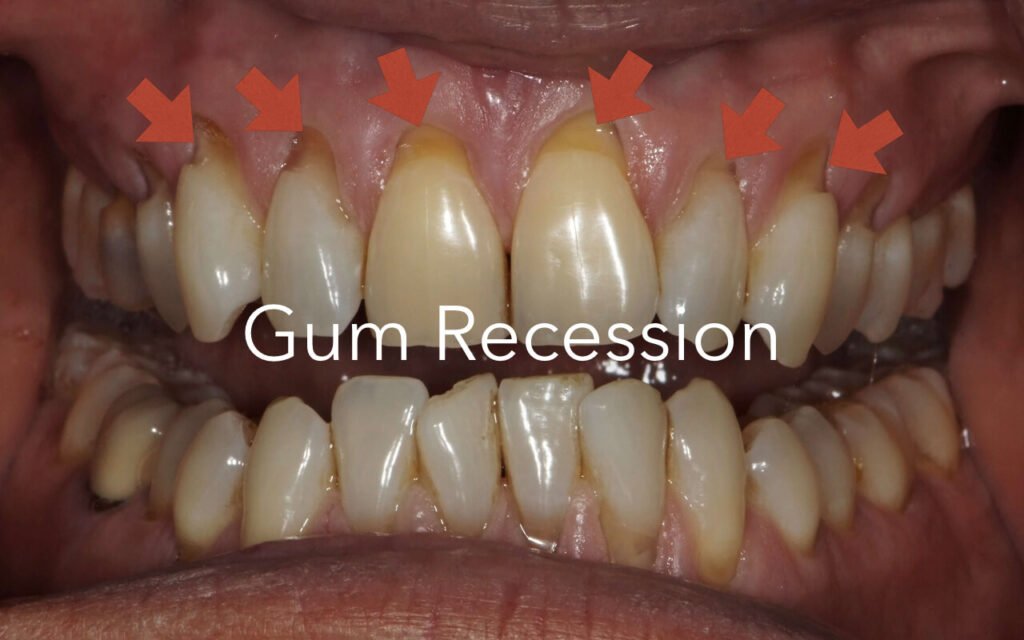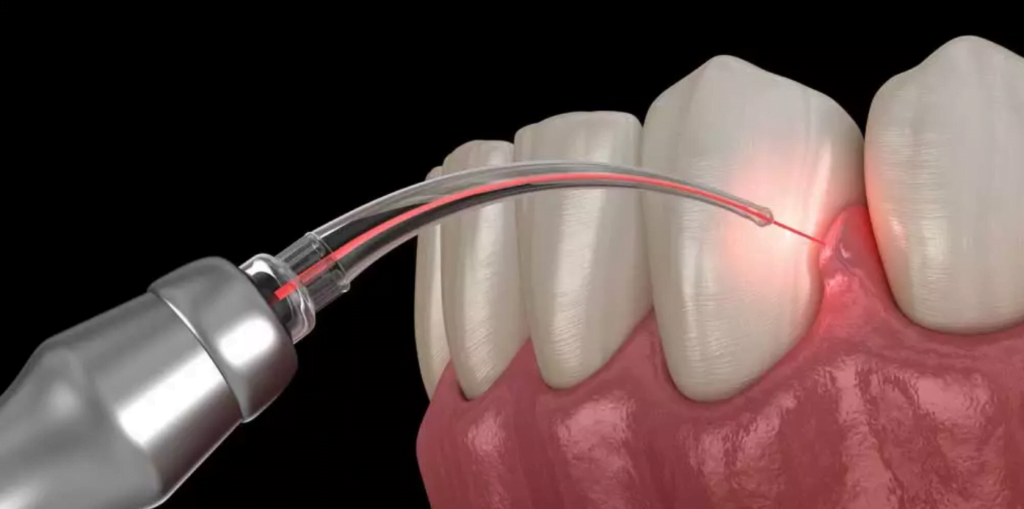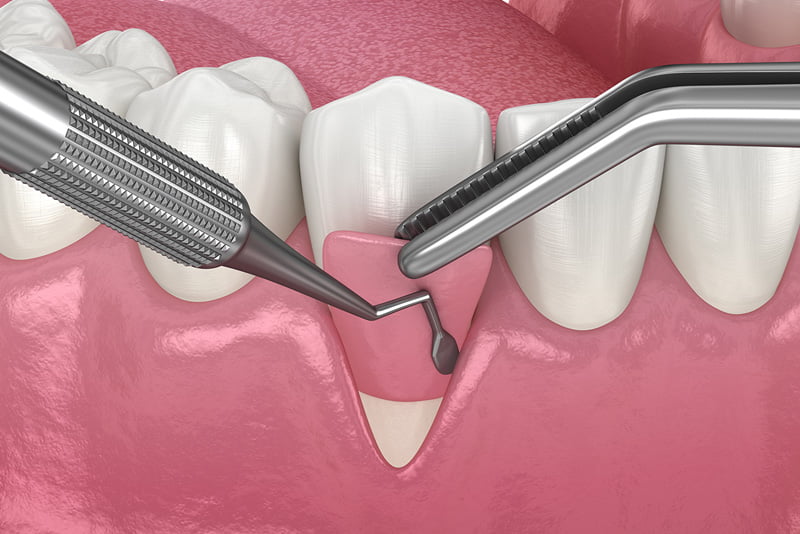Gum Recession: Everything You Need to Know in Malaysia
Table of Contents

Gum recession, common in Malaysia, appears due to poor oral hygiene, aggressive brushing, smoking, or genetics. You might notice tooth sensitivity, longer-looking teeth, or a receding gumline. Treatments include scaling, antibiotics, or natural remedies, with surgical options like soft tissue grafts for advanced cases. Maintaining meticulous oral hygiene, careful dietary habits, and regular dental visits are crucial preventive measures. If you address these aspects of gum recession, you’ll significantly improve your oral health. Further insights will cover detailed causes, symptoms, treatments, and preventive strategies for comprehensive dental care.
Causes of Gum Recession
Several factors contribute to gum recession, including poor oral hygiene, aggressive brushing, smoking, untreated periodontal diseases, and genetics. Understanding these risk factors is crucial for optimal dental care and prevention of gum recession.
Inadequate brushing and flossing allow plaque to build up on your teeth, leading to inflammation and recession. Conversely, aggressive brushing, especially with a hard-bristled toothbrush, can damage your gum tissue, contributing to recession.
Smoking significantly impacts oral health by impairing blood flow to the gums, reducing healing capacity, and increasing susceptibility to infections. This makes smokers more prone to gum recession.
Untreated periodontal diseases like gingivitis and periodontitis are among the primary causes of gum recession. When these conditions aren’t managed properly, they cause chronic inflammation and destruction of the supporting gum tissue.
Genetics also play a pivotal role, with approximately 30% of the population genetically predisposed to gum recession. If you have a family history of gum disease, you’re at a higher risk.
It’s essential to recognize these factors and adopt comprehensive dental care practices to mitigate your risk and maintain healthy gums. Regular dental check-ups, proper brushing techniques, and avoiding smoking are key preventive measures.
Symptoms of Gum Recession
Recognizing the symptoms of gum recession early is vital for effective management and treatment. You may notice increased tooth sensitivity to hot or cold temperatures, which often serves as an initial indicator. This sensitivity arises because receding gums expose the tooth roots, lacking the protective enamel layer. Additionally, your teeth may start to appear longer, a visual clue that the gum line is receding.
Pay attention to changes where your gums meet your teeth. A receding gum line is a clear sign that warrants clinical evaluation. Dental hygiene plays a crucial role; inadequate brushing or flossing can exacerbate gum recession. Thorough and consistent dental hygiene practices can help mitigate further gum deterioration.
Lifestyle factors also significantly impact gum health. High-stress levels, smoking, and poor dietary habits can accelerate gum recession. If you experience any of these symptoms, it’s essential to consult a dental professional for a proper diagnosis. They can provide insight and recommend prevention strategies tailored to your lifestyle and dental hygiene practices.
Ultimately, you’re encouraged to remain vigilant about these symptoms. Early detection and proactive management can greatly improve your dental health outcomes.

Treatment Options
When treating gum recession in Malaysia, dental professionals often recommend scaling and root planing to thoroughly remove plaque and tartar buildup. This non-surgical alternative effectively cleans the teeth and gum line, reducing inflammation and preventing further recession. Sometimes, antibiotics are prescribed to eliminate harmful bacteria contributing to the condition.
For those considering natural remedies, maintaining optimal oral hygiene is crucial. Regular brushing, flossing, and using an antiseptic mouthwash can help manage mild gum recession. Additionally, some patients find natural substances like aloe vera and green tea beneficial due to their anti-inflammatory properties.
Cost considerations play a significant role in choosing treatment. Non-surgical alternatives like scaling and root planing are generally more affordable compared to surgical interventions. However, the overall cost can vary based on the extent of recession and the need for adjunctive treatments like antibiotics.
The recovery process after non-surgical treatments is usually straightforward. You might experience some sensitivity and minor discomfort, but these symptoms typically resolve quickly. Following your dentist’s aftercare instructions, including maintaining good oral hygiene, will support a smooth recovery and help prevent future gum recession.

Surgical Procedures
In cases of advanced gum recession, dental professionals often recommend surgical procedures to effectively restore gum health and prevent further deterioration. One common method is open flap scaling and root planing. This involves lifting the gum tissue to remove bacteria and tartar from the roots of your teeth.
For more severe cases, regeneration procedures aim to stimulate the regrowth of natural bone and tissue, thereby restoring gum health.
Soft tissue grafts, such as connective tissue grafts, involve taking tissue from another part of your mouth and placing it in the receded area. Another option, free gingival grafts, uses tissue from the roof of your mouth to cover exposed roots and halt further recession. The chosen procedure depends on the severity of your gum recession and your specific needs.
Post-surgery, the recovery process is crucial. Proper post-surgery care includes following your dentist’s instructions meticulously to ensure optimal healing. You might experience some discomfort, but this usually subsides within a few days.
Cost considerations are also important. While these procedures can be costly, some insurance plans may cover part of the expense. It’s essential to consult with your insurance provider to understand your coverage options.

Prevention Methods
Preventing gum recession requires a proactive approach, including meticulous oral hygiene, regular dental visits, and lifestyle adjustments. Start by brushing and flossing daily to remove plaque and reduce the risk of gum disease. Use a soft-bristled toothbrush and gentle brushing techniques to avoid eroding the gum tissue.
Your dietary habits play a significant role too. A balanced diet rich in vitamins and minerals can bolster gum health. Foods high in vitamin C and calcium are particularly beneficial. Avoid sugary snacks and beverages that can contribute to plaque buildup and gum disease.
Regular dental check-ups are non-negotiable. Professional cleanings and early intervention can catch signs of gum recession before they exacerbate. Discuss any issues like teeth grinding or misaligned bites with your dentist; these can exert undue pressure on your gums, accelerating recession.
Lifestyle choices like smoking cessation are crucial. Smoking reduces blood flow to the gums, impairing their ability to heal and stay healthy.
Adopting these preventive measures can significantly diminish your risk of gum recession. Integrate these practices into your daily regimen to maintain optimal gum health and prevent the onset of recession.

Conclusion
In conclusion, when considering treatment for gum recession in Malaysia, it’s important to understand the different types of treatments available, the cost factors involved, and the materials used.
By comparing these aspects and understanding the pricing structure, you can make an informed decision on the right treatment for you.
Remember to consult with a professional periodontist to determine the best option for your specific needs and budget.
Choose wisely for healthier gums and a better smile with kliniknearme.com.my

FAQ
Frequently Asked Questions
You should be worried about gum recession if you notice sensitive teeth, tooth mobility, or longer-looking teeth. These symptoms often indicate significant gum recession, which can lead to serious issues like tooth decay and gum disease.
Clinical evidence suggests early detection and professional intervention are crucial. If you observe exposed tooth roots or changes in your gum line, seek dental advice immediately to manage and potentially reverse the condition.
You can worsen gum recession by using improper brushing techniques, such as brushing too hard or using a hard-bristled toothbrush. Poor oral hygiene, smoking, and untreated teeth grinding also contribute significantly. Additionally, inadequate dental care exacerbates the problem.
Orthodontic treatment, if not managed carefully, can apply pressure on gums, leading to recession. Always consult with dental professionals to ensure you’re using proper techniques and receiving appropriate care.
Yes, you can rebuild gums after recession through gum grafting and tissue regeneration. Gum grafting involves transplanting tissue from one part of your mouth to the receding gums, effectively covering exposed roots.
Tissue regeneration can also be stimulated using advanced techniques. The success of these procedures depends on your oral health and the skill of your dental professional.
Post-operative care is essential to ensure proper healing and long-term success.
To stop gums from receding, combine natural remedies and professional treatments.
Maintain impeccable oral hygiene with a soft-bristled toothbrush and proper technique. Use fluoride toothpaste and consider lifestyle changes like quitting smoking.
Consult a dentist for professional treatments, such as scaling and root planing, or even surgical options if needed.
Early detection and intervention are crucial for effective management and halting further recession.
